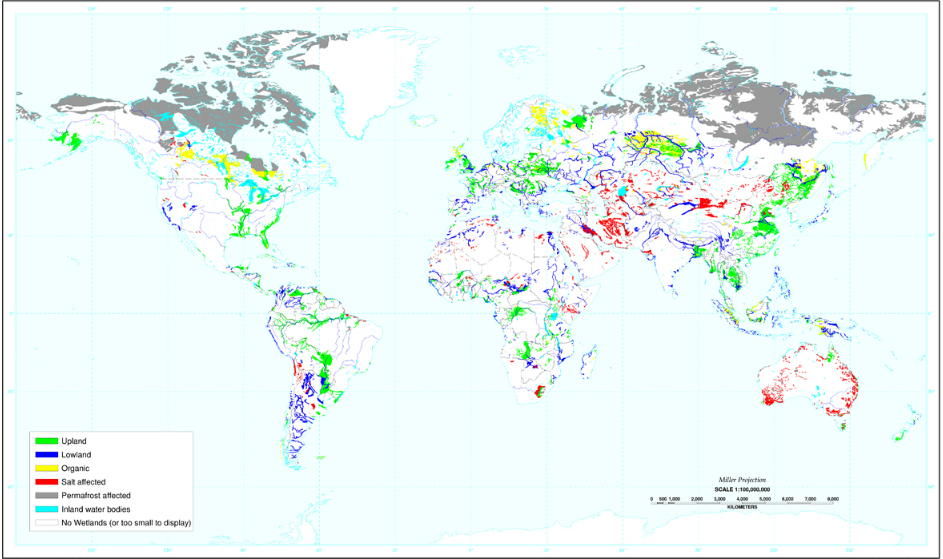Approximately 35 percent of the world’s wetlands were lost between 1970-2015 with annual rates accelerating from 2000.
This is according to the Global Wetland Outlook report which disclosed that Wetlands across the worlds are disappearing three times faster than forests.
The report was released during the 13th Meeting of the Conference of the Parties (COP13) of the Ramsar Convention on Wetlands.
“The Global Wetland Outlook is a wake-up call – not only on the steep rate of loss of the world’s wetlands but also on the critical services they provide. Without them, the global agenda on sustainable development will not be achieved,” said Martha Rojas Urrego, secretary general of the Ramsar Convention on Wetlands.
The report noted that every region is affected and it emphasized on the necessity to develop effective wetland management plans and integrating wetlands into the planning and implementation of national plans on sustainable development, climate change, and other key global commitments.
According to the UN, more than 80 percent of wastewater is released into wetlands without adequate treatment, while fertilizer use in 2018 is likely to be 25 percent higher than in 2008, exacerbating excessive wetland plant growth and levels of decomposition resulting in oxygen starvation for flora and fauna alike. While the biodiversity crisis is just as alarming, with more than 25 percent of all wetlands plants and animals at risk of extinction.
Wetlands are critical to human and planet life. Directly or indirectly, they provide almost all of the world’s consumption of freshwater. More than one billion people depend on them for a living and 40 percent of the world’s species live and breed in wetlands.
Wetlands are a vital source for food, raw materials, genetic resources for medicines, and hydropower; they mitigate floods, protect coastlines and build community resilience to disasters, and they play an important role in transport, tourism and the cultural and spiritual well-being of people.
Despite this, wetlands remain dangerously undervalued by policy and decision-makers in national plans. An inexplicable omission given the pivotal role wetlands play in delivering global commitments on climate change, sustainable development, biodiversity and disaster risk reduction, with wetlands contributing to 75 indicators of Sustainable Development Goals (SDGs) alone.
The persistent and growing threat to the world’s remaining wetlands from water drainage, pollution, unsustainable use, invasive species, disrupted flows from dams and sediment dumping from deforestation and soil erosion
The report gave a number of recommendations that can help manage the situation, key being use of existing funding mechanisms to apply economic and financial incentives for communities and business to protect wetlands through tax benefits.
Other recommendations included identifying solutions for wise use of wetlands that draw upon all expertise, ranging from hard science to traditional knowledge, to secure wide engagement on wetland protection and wise use and ensure sound decision-making.
